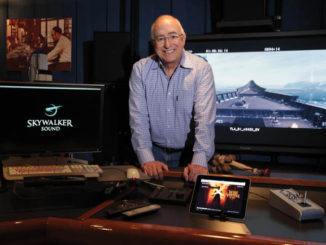
by Mel Lambert • portraits by Martin Cohen
The smooth operation of a post facility depends upon the skills of a well-staffed engineering department to ensure that editors and mixers can work efficiently to create a film/TV soundtrack. In order to throw an inquisitive spotlight on the roles played by a number of leading “unsung heroes” from our industry — who work behind the scenes to ensure minimum downtime — CineMontage reached out to Brian Bair from 20th Century Fox Post-Production Services, Steve Boze from Walt Disney Studios, Kevin Collier from Warner Bros. Studio Facilities, Bill Johnston and Charlie Campagna from Formosa Group/Audio Head, and Michael Novitch from Technicolor at Paramount.
Collier, director of engineering at Warner Bros., claims that his major challenges “have changed a lot, but not changed at all! In the early days — and I’ve been at Warner for 19 years, following 11 years at Universal Studios — we had larger crews working on the stages and in the engineering department.” Now, his team of a dozen engineers looks after 16 film and TV dub stages, together with 200-plus Pro Tools edit suites, plus two Foley and six ADR stages.
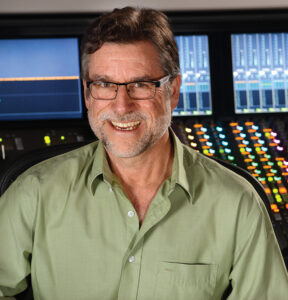
“These days, we often have to work out the bugs in digital consoles and workstations,” he continues. “But with the proliferation of IT, server technologies are more stable than our other niche tools. And to make sure that we can play back digital assets recorded in legacy formats, we keep two players of just about every style and vintage. Realistically, storage space has become more valuable than technology; we need to ensure that our stages can handle any format of current and older-generation media that they might encounter.”
The biggest issue for Novitch, chief engineer of Technicolor Sound Services on the Paramount lot is technology management. “New systems don’t always do what the manufacturers say they do,” he says. Novitch has been with the facility for five years and worked previously at Todd-AO and Sony facilities. At Technicolor, he and his crew of four technicians look after four film re-recording stages, five TV stages, two ADR stages and one Foley stage, in addition to over 30 editing suites.
“My number one priority each morning is to ensure that all our stages are fully operational; we need to address any problems as quickly as possible,” Novitch says. “I hold off on bigger projects until the weekend so I can work uninterrupted. We are fortunate here at Technicolor, because this facility was built from the ground up to include current-generation networking and workflows. During post-production of 2014’s Transformers: Age of Extinction, for example, we really stressed our central SAN [server network] because of the number of dialogue and sound- effects Pro Tools sessions being accessed simultaneously from the stage and editorial areas.”
Having worked previously with console manufacturer Solid State Logic, and then at Technicolor Creative Services for nine years, Bair has been with Fox for four years as chief engineer. With a crew of around 20, including three full-time technicians who work in a dedicated wiring and installation shop, he oversees three feature-film dub stages equipped with AMS Neve DFC consoles, plus a number of editorial suites and QC/archival rooms. The complex also includes several ADR, Foley and scoring stages. “We are well staffed and, if possible, will dedicate one engineer plus a recordist to a dub stage,” he reveals.
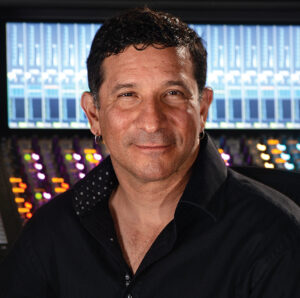
New immersive soundtrack formats, such as Dolby Atmos and Auro 3D, put additional demands on a facility’s technical infrastructure, according to Bair, “since we now have far more playback and record tracks to accommodate on our A/V production systems and centralized storage. In the past, we might have been using a 64-channel Pro Tools system as our primary stem recorder; nowadays we can go as wide as 192 record tracks. Data management has become our way of life. We are under constant pressure to do more in the same amount of time, yet within the same budget!”
Bair tries to anticipate Fox’s clients’ needs before they happen. “Advance preparation is the key to our success, he continues. “What will the mixers and/or editors need, in terms of playback systems, stem recorders, plug-ins, outboard gear, video codecs, projection, etc.? To ensure that the picture and sound will roll flawlessly on the stage from the start of the session, my engineering team members check in early each morning with our lead mixers to make sure everything is ready for the client.”
WHAT’S AROUND THE TECHNOLOGY CORNER?
In terms of new technologies, Novitch talks regularly with chief engineers at other post facilities. “I asked around about their experience with Dolby Atmos before we upgraded Stage 1 and Stage 2, and others to come,” he explains. “We also installed a temporary system to handle an Auro-3D mix.”
Bair readily concedes, “Post-production technologies are rapidly changing, with fiber-channel and 10 GB networks, together with Dolby metadata and Pro Tools|HDX systems” running at higher sample rates and bit depths. We get excellent technical support from AMS-Neve for our DFC consoles; they are very responsive to our specific software/hardware requests, and are willing to provide code re-writes on the fly.”
After 12 years as senior vice president of engineering at Todd-AO Soundelux, Johnston recently joined Formosa Group as head of engineering and strategic planning, where he oversees a three-man technical crew responsible for the facility’s multiple editorial suites and dubbing stages.
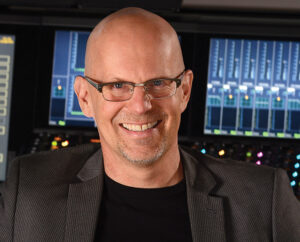
“We might have 80-plus editors working on as many as 20 projects; the technical department needs to be highly reactive to workflow changes,” he explains. “Today, we live in a Pro Tools world. Given the complexity of plug-ins choices, we need to manage people’s expectations. You cannot tell somebody that they cannot use, for example, Audio Ease Altiverb because it’s not available in the cutting room, conforming suite or dub stage — that process needs to be completely seamless.”
With a small technical crew, Johnston relies on good vendor support. “We used to fix and/or modify gear, but nowadays we look primarily for board swaps,” he continues. “We try to carry a good supply of critical components. Software updates are always a moving target, with new hardware, operating system changes and updated control systems. Networking is getting faster with 10 Gbit internal links for our push/pull media servers. We do not use a large SAN because, from experience, they can cause workflow problems since our work can happen at any facility in town. Instead, we upload files from our remote locations daily and specify delivery via Aspera or portable encrypted drives.”
Having been with Disney Studios for close to 35 years, Boze — formerly an Editors Guild Board member — currently serves as director of engineering of its post-production group. “Time management is a major consideration here,” he states. “I need to keep my technical troops and our creatives happy on a limited budget and with limited time. I oversee 12 technicians and between six and 12 wiring people who look after major modifications and ongoing updates. I try to maintain a sensible big picture because the gear has gotten so complex, you’re only as good as the people you have working for you.”
MAINTAINING AN OPEN-DOOR POLICY
To head off potential problems, Boze says he needs to listen to his people. “After a while, you get a gut instinct — it’s not going to be fine, so I need to have somebody to fix it. And you cannot always assume that everything will go right; you need to view the project through the eyes of the client and anticipate problems. I like to hear from the creatives what is going well, and I like to hear what is not going well.”
Johnston also seeks input from editors and mixers. “I search through the noise to see what is really happening,” he explains. “Our creative talent is very technologically aware. As an independent post facility, we need to be lean and mean — to do more with less and find the unique, cost- effective solution while simultaneously delivering a better- quality product.

“We are always looking for efficient solutions from editorial, pre-dubs and mix,” Johnston continues. “For example, I have been taking a close look at Fortium Technologies’ MediaSeal, a file encryption scheme for post- production [that authenticates authorized users through hardware keys]. “In this way, our QuickTime video files can be secured against unauthorized viewing and piracy. The file encryption works across Mac and Windows platforms; it should be employed by everybody!”
Adds Collier, “My crew is pretty small for the amount of technology we oversee, so we all talk to one another to keep up with developments. We carefully monitor new releases of Avid Pro Tools; for the moment, we have decided to stay with X, rather than upgrade to XI. When we consider it safe, we move over to the new version; to ensure full compatibility of the whole facility, we will need to be updated.”
According to Novitch, Technicolor recently made the transition to Pro Tools XI on all the Paramount stages. “But plug-in compatibility is a major headache,” he acknowledges. “Since we have two Toy Boxes on each stage for dialogue and effects, we need multiple licensed copies of each plug-in. Editorial is a little different, because we hold subsets of the plug-ins that are available on the dub stages.”
Boze is also sensitive to the needs of guest mixers using the facility’s two stages. “We employ several dub stage engineers — including Andy Winderbaum, Ryan Stern and Dan Abrams — to be ‘the Face of the Stage’ and handle such matters as explaining the Crestron lighting-control panels and networks access. Local support from Avid for our Euphonix System 5 consoles is good, and we’re pretty good at finding solutions to day-to-day problems.”
“My day is planned around lists of projects, including R&D into ways to complete specific jobs,” Collier explains. “I operate an open-door policy so I can hear from anybody on the lot who needs our help; accessibility has always been my style.” Agrees Norvitch, “I also try and call on each stage at least once a day to check on any problems and learn more about the workflow.”
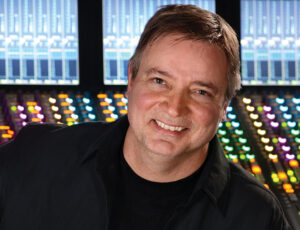
“Our crews all share information with one another,” Boze confirms. “Visiting editors also bring us news of software developments. Engineers are a community; we all know one another and keep in touch with developments.” In terms of people skills, “We need to be able to calm clients down and exude confidence. Here at Disney, I have some of the best people to do the best job. After all, grandstanding is okay, but you have to deliver the goods!”
CONNECTING EDITORIAL SUITES AND DUB STAGES
Data networking remains a primary concern for Boze. “Keeping material flowing to the stages is our domain,” he concedes. “We have a server on each stage, and use offline backup to other media. The server can be completely isolated if necessary for security, or linked in real time to Skywalker Sound,” which is also owned by Walt Disney Studios. “We often handle editorial and pre-dubs at Skywalker in Marin County and then final here at Disney in Burbank. We’ve made it a seamless process, like being on the same lot.”
Disney’s Avid control surfaces and Pro Tools systems plug together via Satellite Link, which allows multiple Pro Tools/HD systems to be synchronized and controlled as a single transport, according to Boze, who admits that software problems are always an issue. “Hopefully, it’s not a show-stopper; we need to quickly identify the malfunction and cure it.”
“Digital audio networking is becoming more and more important on the stages,” Collier adds. “We use BBS Soundweb components to interconnect audio systems, in addition to [Audinate] Dante-based networks to enable more real-time audio transports via CAT5. We are also using [networks] to carry HD video and audio over a closed Internet, to enable real-time links between Warner Burbank with our De Lane Lea facility in London.”
“Our magic tool is data management,” Novitch confides, “including the choice of SAN [storage-area network] versus Cloud storage. We generate petabytes of data for a film soundtrack and need to be aware of the lag time required to load multiple Pro Tools sessions during a mix, and then offload all of the required deliverables in multiple formats. But is Cloud storage secure enough? Can we get MPAA approval?”
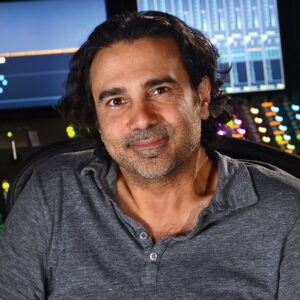
The technical prowess of a post facility’s engineering department is just one component of an efficient infrastructure. On the creative side, a well-curated sound effects library and a competent recordist can be essential to success. One such individual is Campagna, who currently oversees Formosa Group’s extensive library; he previously worked at Weddington Productions, Warner Bros. and Soundelux.
“Charlie is responsible for everything to do with our sound library here, as well as being an amazing field recordist and expert on microphones and recording technology,” offers sound designer/supervising sound editor Mark Mangini, MPSE, who has worked with Campagna for more than 20 years. “Sound editorial grinds to a halt when the sound library is not useable. Charlie understands the exigencies of how to ‘describe’ a sound so that it can be found in a database query, which is no small task.”
“Our 16 TB central server holds over 300,000 sound files, most of which are recorded at 96 kHz/24-bit or higher files that can be carried to the cutting room and stages via a 10 Gbit/sec network,” Campagna explains. “I instigated a consistent naming and cross referencing scheme for the library. Multiple descriptors can be used by our editors and sound designers to find the material they need for initial rough cuts for picture editors.”
The facility’s sound library houses a variety of media formats, “including a vintage Nagra with quarter-inch analog tape,” according to the librarian. “These days, we deal with files imported from Sound Devices and Zaxcom recorders that transfer directly into our Pro Tools sessions. We use Soundminer software to catalogue and database the files.”
What happens behind the scenes can dramatically impact the smooth running of editorial suites and re-recording stages. No facility can overlook the obvious fact that gear breaks. It is the unsung heroes of the engineering department who ensure everything is back in operation with a minimum of fuss.




